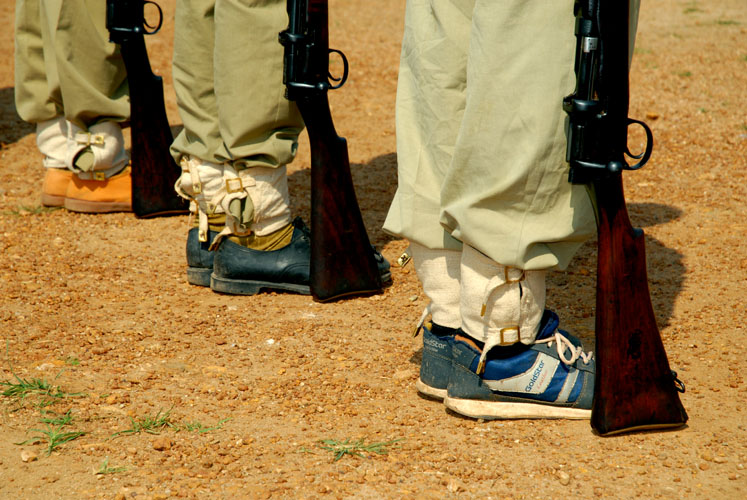
NEW DELHI — Faced with setbacks in their former stronghold, India's Maoist insurgents have responded with a new war strategy that favors large-scale attacks on police forces and high-profile-target killings.
The latest in a series of recent strikes came late last month when 19 persons, including the youngest son of former state Chief Minister Babulal Marandi, were gunned down at a village cultural event in eastern Jharkhand state.
At least 30 guerrillas disguised in khaki reserve police uniforms opened fire on a crowd after one of them reportedly announced they were Naxalites intending to kill the official's older son, who survived the attack.
The Maoists are known here as Naxalites after the West Bengal town of Naxalbari, where an armed peasant uprising broke out 40 years ago.
With an estimated 20,000 soldiers in half of the country's 29 states, continued strikes by the group belie India's emergence as a technologically savvy global power that is expected someday to rival China.
Although the insurgents missed their target in the Oct. 28 attack, analysts say it is part of a broader campaign against state authorities, who have tried to stanch their advance.
"As far as [the Naxalites] were concerned, this was a targeted attack against an enemy group convened for mobilization against them," said Ajai Sahni, director of the Institute for Conflict Management in New Delhi. "It's definitely a trend, and the strategy is clearly documented."
The attack was reminiscent of the March killing of Jharkhand parliamentarian Sunil Mahato, who was fatally shot along with three others while watching a soccer match.
In September, former Chief Minister Janardhana Reddy of the southern Andhra Pradesh state and his wife narrowly escaped a massive land-mine blast that killed three escorts in their convoy during a village tour.
Both Jharkhand and Andhra Pradesh are hotbeds of Naxalite operations, and the chief ministers were actively involved in state programs to counter the rebels' influence in rural areas.
Although Indian Prime Minister Manmohan Singh has said the Naxalites pose the biggest internal security threat to the country since independence from British colonial rule in 1947, authorities counter that such attacks are a telltale sign the movement has grown weaker in some areas where it once had traction.
An aggressive counterinsurgency strategy in Andhra Pradesh, a traditional Naxalite stronghold, has killed hundreds of fighters and led to the arrest of top leaders since peace talks collapsed in late 2004.
Leading the effort are the Greyhounds, an elite commando force trained specially for guerrilla warfare.
They conduct search-and-destroy operations in the forest belt at the state's northern border, aided by a network of paid informants and former Naxalites who have switched sides.
A report by the federal Intelligence Bureau found that overall incidences of Naxalite-related violence declined last year by more than 65 percent and killings by 78 percent.
However, rebel attacks have increased in states such as Chhattisgarh, where ill-equipped and undermanned police face an estimated 5,000 armed cadres backed by thousands more militia.
According to the federal Home Ministry, Chhattisgarh and Jharkhand accounted for 67 percent of total incidents of Naxalite violence in the country and more than three-fourths of total casualties.
Varavara Rao, a revolutionary poet and former Naxalite representative, says Naxalite forces have withdrawn to the deep jungle to consolidate their strength for bigger attacks that will involve thousands of fighters.
"The mobile war stage is moving forward [in Chhattisgarh and Jharkhand]," he said, noting the success of a March 19 pre-dawn raid on the remote Rani Bodli police outpost in Chhattisgarh that left 55 security personnel dead — the worst attack so far.
The operational shift toward larger, less frequent attacks is said to have been approved at the Maoist party's unity conference earlier this year in the jungle border area between Jharkhand and Bihar states. The two major Naxalite factions, the People's War Group and the Maoist Communist Center, merged in September 2004 to form the Communist Party of India-Maoist.



